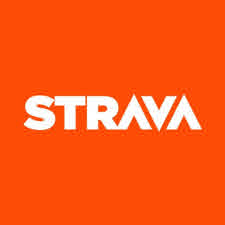We recently won an Innovation Award at the National School Games Summit for a Strava Challenge we set up with Durham & Chester-le-Street SSP in Lockdown 1. The challenge was successful in “rising to the challenge and doing things differently to solve problems as well as developing creative ways to overcome barriers.” The challenge helped school staff to stay active, connected and support their mental health. We therefore thought that it might be helpful to show you how to set up a Strava Group Challenge for your school school staff or organisation.
STEP ONE
Create a CLUB on the Strava App – https://www.strava.com/clubs/new
Ensure it is a running club which means you can record distances from people both running and walking (but not cycling). You can add logos and descriptions and then invite staff/colleagues to join. As the designated “admin” for the group you can see who wants to join and then accept or deny them entry into the club.

The way the club works is that from 1 minute past midnight on a Sunday night you are off – every time a member of your team/club does an activity it records it and adds it to your weekly total – as a whole and also as an individual. You can then see who is doing the longest runs, the most uphill climbs, the greatest time out exercising. It is displayed in a league table.

STEP TWO
Decide a cut off time for taking daily totals – we suggest 9pm. Any miles/kilometres after that time can be rolled over to the next day. You could make a google map of how far you have travelled that day and a Canva template to compare the team totals if you are challenging another group. Our first challenge was to travel from John O’Groats to Land’s End (a mere 874 miles) and as we progressed quickly during the week (there were over 340 participants split very evenly between the two clubs – we decided to turn around and head back up North to double the distance!).
STEP THREE
Keep your team members motivated by creating a POST in Strava in order to let them know how they are doing at various points during the week. This can include photos as well as text. Perhaps you have passed a particularly interesting landmark or famous city?

TOP TIPS FOR MOTIVATION
-
Pick an achievable distance to cover in a week depending on how many team members you have – most people should be able to do 3 or 4 miles per day.
-
Pick an iconic route – Hadrian’s Wall, The Pennine Way, Route 66 – or travel between two cities (we went from Paris to Milan one week!)
-
Take a break from travelling for distance and travel for ART! This will bring out the artistic flair of staff as they try to design their walking/running routes in order to make a pretty pattern or a picture. You will see lots of pans, worms and boxes but also stick people, horses, snails and flowers! Find someone from another company to be the judge.
-
Set up a Whatsapp group to encourage team chat and motivation.
-
Have a theme – take a photo of an animal, some scenery, famous landmarks, something green.
-
Create smaller teams and then have weekly challenges between them – who can climb the most metres? Who can visit the most places starting with the letter S?
-
Most importantly have FUN, keep HEALTHY and ACTIVE and ENJOY!






